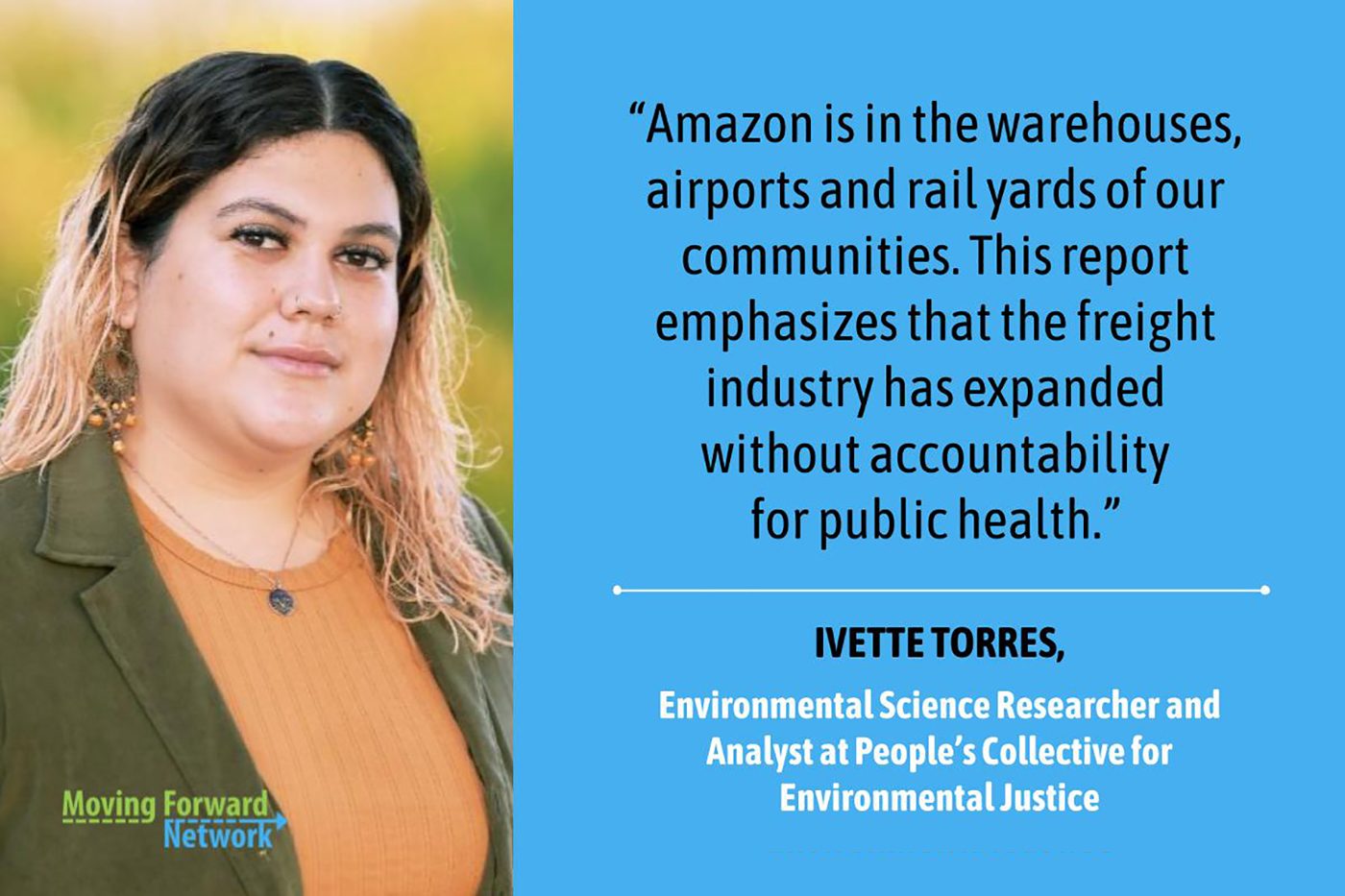
The facts are clear – frontline communities of color breathe more hazardous air nationwide than any other community. And now since the pandemic, Amazon has been aggressively expanding its warehouse facilities in frontline communities across the country.
An article co-published by Consumer Reports and The Guardian reveals that over half of those who live near Amazon’s warehouses are people of color. Dr. Sacoby Wilson, director of the Center for Community Engagement, Environmental Justice and Health at the University of Maryland, College Park, which worked with CR to analyze the locations of Amazon facilities. “They (the communities near Amazon warehouses) get more traffic, air pollution, traffic jams and pedestrian safety problems, but they don’t receive their fair share of the benefits that accrue from having the retail nearby. ”
In a panel covering Amazon’s environmental racism, José Acosta-Cordóva, the Environmental Planning and Research Organizer at Little Village Environmental Justice Organization (LVEJO) and MFN member, explained how Amazon’s environmental harm hits close to home.
“In the city [of Chicago], we have 26 industurial corridors… all the largest ones and the industrial corridors with the heaviest concentration of TDLs (transportation, distribution, logistics) and other heavy manufacturing happen to be within black and brown communities on the south and west side.”
– José Acosta-Cordóva, LVEJO
Similarly, MFN member, The People’s Collective for Environmental Justice (PC4EJ), has fought to reduce pollution and harm caused by warehouses like Amazon’s in the Inland Empire region of Southern California.
Ivette Torres, Environmental Science Researcher and Analyst at PC4EJ, has extensively researched the ways that warehouses harm environmental justice communities in Southern California. Ivette co-authored a report in 2021 about this very issue, which she spoke about during the panel discussion.
“Amazon is in the warehouses, airports and rail yards of our communities. This report emphasizes that the freight industry has expanded without accountability for public health.”
– Ivette Torres, PC4EJ
MFN members have risen to the occasion to spotlight how warehouse expansion also expands the freight transportation system, releasing toxic emissions day in and day out in environmental justice communities. In October 2022, the Moving Forward Network sent a letter to the EPA (PDF) demanding that EPA better regulate the significantly expanding warehouse sector increasing pollution and health risks disproprotionately to already overburdened environmental justice communities.
Interested in learning more?
Interested in learning more? Watch a replay of the panel.
Find our member organizations at their websites or on social media:


